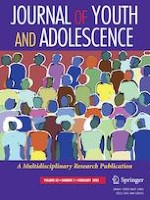01-06-2022 | Empirical Research
Profiles and Transitions of Cyberbullying Perpetration and Victimization from Childhood to Early Adolescence: Multi-Contextual Risk and Protective Factors
Gepubliceerd in: Journal of Youth and Adolescence | Uitgave 2/2023
Log in om toegang te krijgenAbstract
Cyberbullying may negatively affect youth’s development. Because knowledge of the onset and course of cyberbullying during middle childhood and early adolescence is limited, studies of its antecedents, heterogeneous profiles, and transitions are needed to inform prevention and intervention efforts. The current longitudinal study explored the profiles and transitions of cyberbullying perpetration and victimization from middle childhood to early adolescence, along with their multi-contextual risk and protective factors. A total of 4326 Chinese elementary school students (44.6% female, Mage = 9.94) participated in self-report assessments at four time points with six-month intervals. The profiles and transitions of cyberbullying were modeled using latent profile analysis and latent transition analysis. Three cyberbullying profiles were identified: non-involved, cyberbully-victims, and cybervictims. The findings on the development of cyberbullying showed that: (1) its prevalence rate decreased from middle to late childhood and then increased during the transition to early adolescence; and (2) its stability increased from middle childhood to early adolescence. Multi-contextual risk and protective factors of profile memberships and transitions were also examined. The findings suggested that: (1) family abuse and peer aggression were stable risk factors for cyberbully-victims; (2) high-quality friendships and self-control were stable protective factors for cyberbully-victims; (3) family abuse and depressive symptoms were stable risk factors for cybervictims; and (4) significant predictive effects of family abuse, high-quality friendships, perceived parental warmth, and self-control were found for the transitions in cyberbullying profiles. These results supported multi-contextual models of the development and transitions of cyberbullying in Chinese children.
